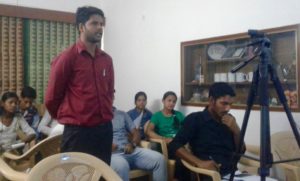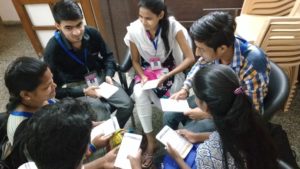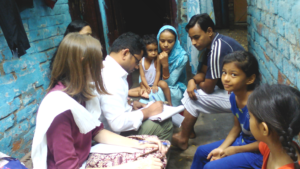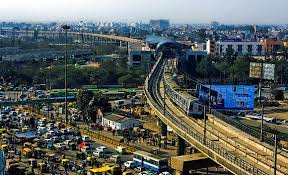Indus Information Initiatives Pvt Ltd., New Delhi is the research partner for the Centre for Advanced Study of India (CASI) at the University of Pennsylvania for their NCR Urban Survey, which started in 2016 and concluded in May 2017. The CASI NCR Urban Survey is the first NCR specific survey of this kind. The study adopted a rigorous methodology. 5,000 households that were randomly picked from 100 clusters spread over NCR were sampled. The project involved 1400 man-days of data collection and 900 man-days of data cleaning and audit.



Objective
The objective of this research survey is to explore how New Delhi and its surrounding areas are evolving and what are the implications of urbanisation for the inhabitants of the NCR. It aims to understand the dynamics of urbanisation- how does urbanisation affect the social, political and economic aspects of the residents. In the context of NCR, which is a spectrum of urbanisation- can effect of urbanisation on these aspects of life be seen to be different at different levels of urbanisation?
Dimensions of urbanisation
This study is to understand the dynamics of urbanisation. Just 15-20 years ago, 75% of India was villages. Today, 32% of India is urban, fast growing and accelerating new avenues for people. Urbanisation brings with it key positive aspects- better physical and social infrastructure, employment opportunities, and a variety of economic opportunities. Education and job opportunities in urban areas have been a major factor attracting migrants from rural to urban areas for a better living. Also, the urban space offers security and refuge to people in distress and comes as a boon to them in their tough times (from easing out of financial pressures to living a better lifestyle).
Along with this, urbanisation is also seen as a melting pot of diverse social values, where traditional social attributes are obfuscated and open-mindedness and anonymity are welcomed.
Challenges in the wake of urbanisation
 Urbanisation brings with it lots of challenges, especially when seen from a policy maker’s perspective.
Urbanisation brings with it lots of challenges, especially when seen from a policy maker’s perspective.
- The unpredictability of the rate at which urbanisation will happen at any place
- Ever increasing pressure on infrastructure, especially on transport and social infrastructure
- Issues related to state capacity- to provide basic services, safety, maintaining peace, transport etc.
Taking the benefits and challenges of urbanisation into consideration, the idea of this survey is to study the phenomenon of urbanisation and what happens in urbanisation. The geographical area of the survey was decided based on the July 2013, Government of India definition of NCR. It covers a huge swathe of urban and peri-urban territory- from Alvar to Muzaffarnagar, and Bharatpur to Panipat.
Thus, the survey covers an interesting canvas of different levels of urbanisation in the study area and will enable us to see how that has affected the social, political and economic aspects of residents in urban area (especially in the context of NCR), and what are the dynamics of different levels of urbanisation.
Sections included in the survey
- Demographic Profile
- Education- Opportunities and cost
- Crime and Safety
- Basic Services
- Political Participation
- Commensality
- Grievance Redressal
- Horizontal Networks
- Policy Perceptions
- Migration
- Commuting
